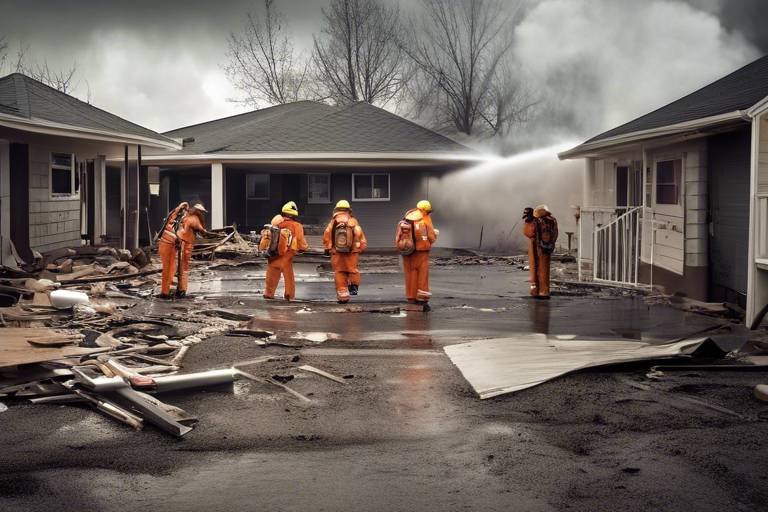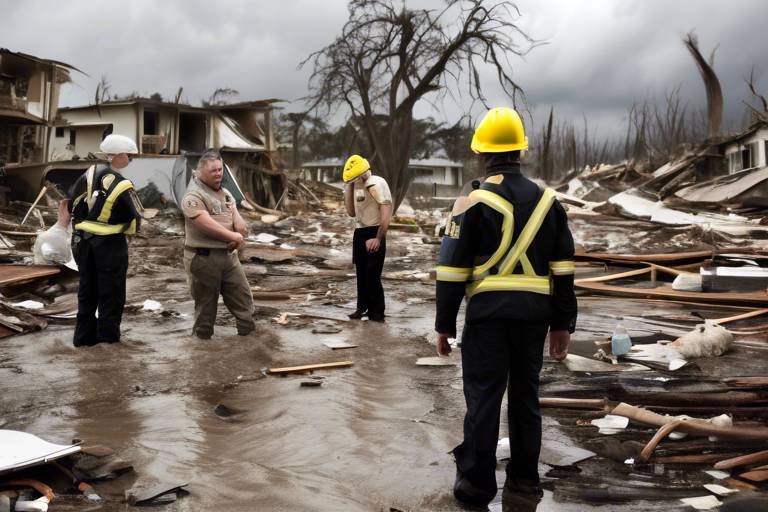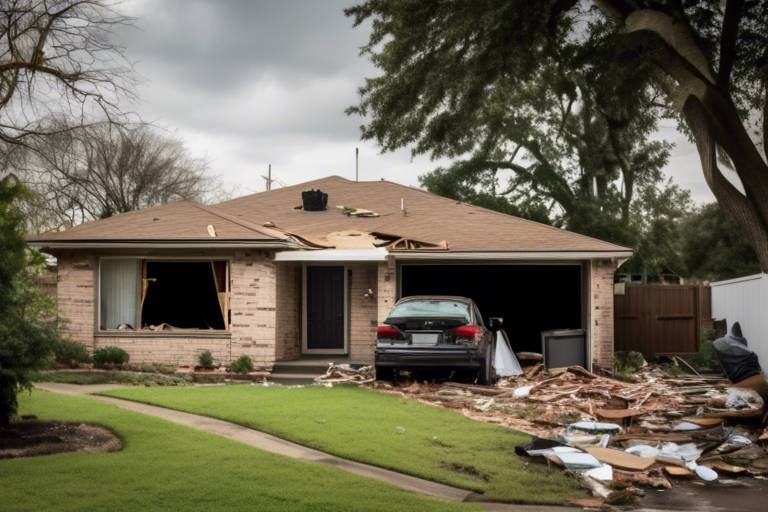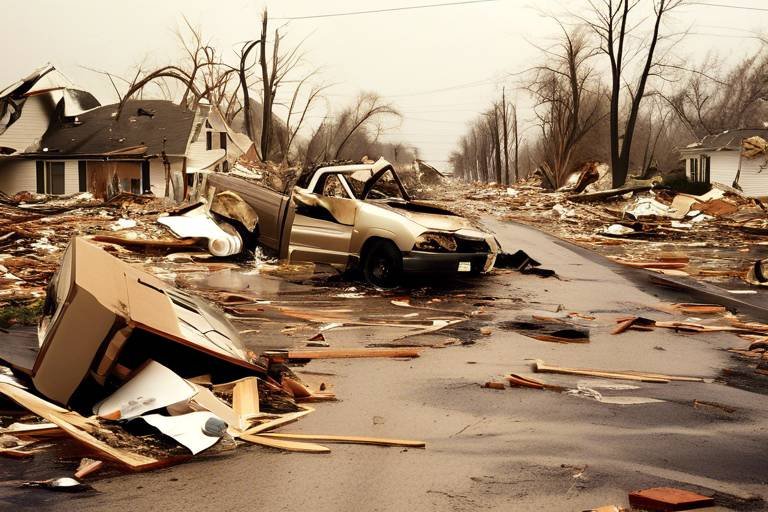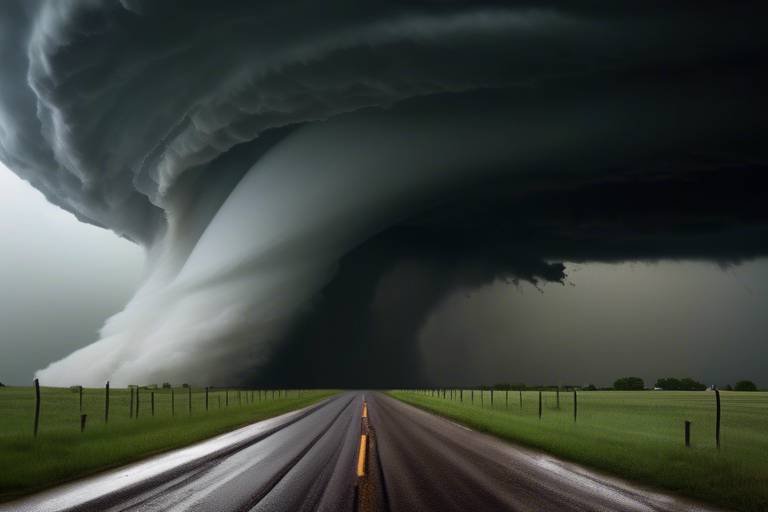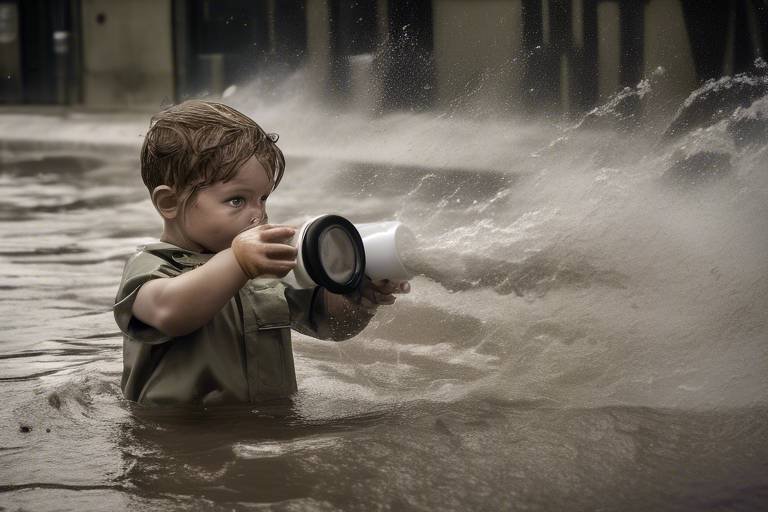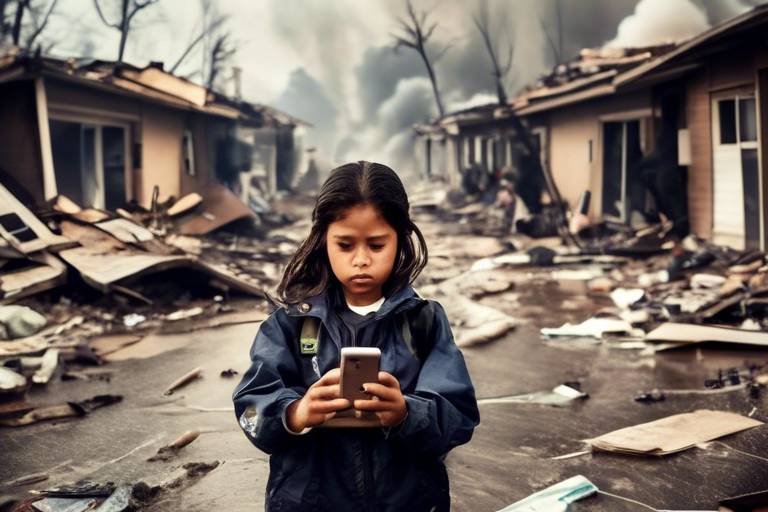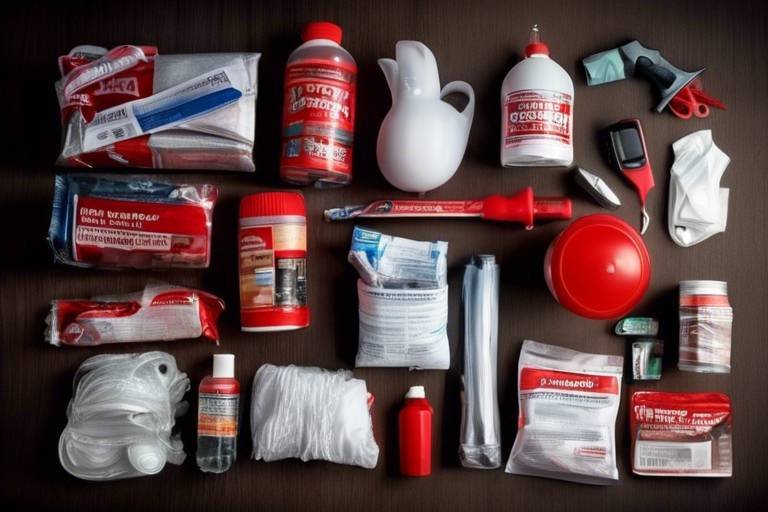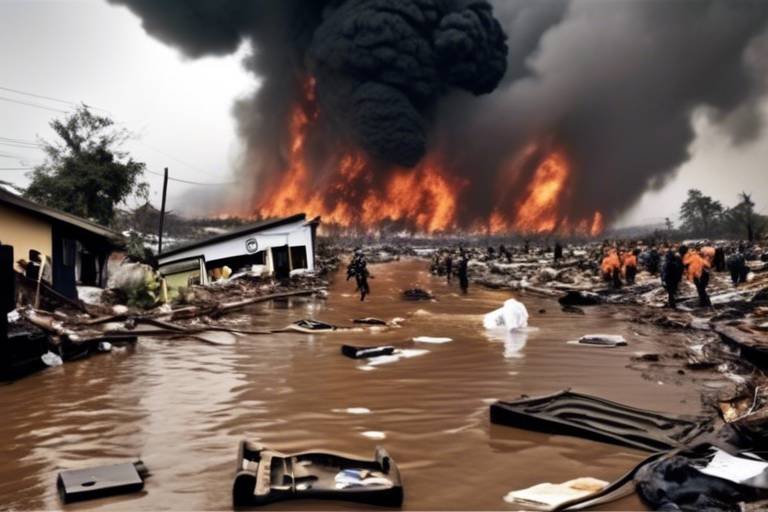Building Safe Communities - The Role of Emergency Preparedness
In an unpredictable world, the importance of emergency preparedness cannot be overstated. It serves as a cornerstone for creating safe communities where residents are not only aware of potential risks but are also equipped to handle them effectively. Imagine a community where everyone knows what to do when disaster strikes—where children, adults, and even the elderly understand their roles in an emergency. This isn’t just a dream; it’s a reality that can be achieved through diligent planning and collaboration.
Emergency preparedness is not merely a set of protocols; it’s a mindset. It’s about fostering a culture of readiness that permeates every aspect of community life. When residents actively participate in preparedness initiatives, they become more resilient and capable of facing unforeseen challenges. Think of it as a team sport—everyone plays a position, and when they work together, the team can overcome any obstacle. This article will delve into the various strategies and best practices that can be employed to enhance emergency preparedness, ultimately leading to safer, more resilient communities.
Understanding why emergency preparedness is essential can help communities reduce risks and respond effectively to crises, ensuring the safety and well-being of all residents during unforeseen events. Emergencies can come in many forms—natural disasters, health crises, or even man-made incidents. Each of these scenarios poses unique challenges, but with a well-prepared community, the impact can be significantly mitigated. For instance, consider the devastating effects of hurricanes or wildfires; communities that have invested in preparedness often fare better than those that haven’t. By having emergency plans, resources, and training in place, residents can navigate these crises with greater confidence and efficiency.
Engaging community members in preparedness planning fosters a culture of readiness, encouraging participation in drills, workshops, and information-sharing to enhance collective resilience against emergencies. When individuals feel a sense of ownership in their community's safety, they are more likely to take proactive steps. Think of it as planting seeds of preparedness; with the right nurturing, these seeds can grow into a robust network of support and readiness. This engagement can take many forms, from community meetings to social media campaigns, all aimed at raising awareness and encouraging active participation.
Implementing training programs and educational initiatives equips residents with the knowledge and skills needed to respond effectively during emergencies, ultimately saving lives and minimizing damage. For example, first aid training can empower individuals to provide immediate assistance to those in need, while fire safety workshops can teach families how to create escape plans in case of a fire. The more knowledgeable and prepared the community is, the less likely panic will ensue during a crisis.
Regular workshops and drills provide hands-on experience for community members, allowing them to practice emergency protocols and build confidence in their ability to respond during actual crises. These sessions can be both fun and educational, transforming what might seem like a daunting task into an engaging community activity. For instance, hosting a mock disaster drill can simulate real-life scenarios, helping participants understand their roles and responsibilities.
Distributing resources, such as emergency kits and informational materials, empowers residents to prepare individually and collectively, ensuring they have the tools necessary for effective response. Consider establishing a community resource center where residents can access emergency supplies, safety checklists, and contact information for local support services. This not only enhances individual preparedness but also strengthens the community as a whole.
Building strong partnerships with local authorities enhances emergency preparedness efforts, enabling communities to access vital resources and support during crises while fostering trust and communication. Local governments often have the expertise and resources that can significantly bolster community initiatives. By working together, communities can leverage these resources to create comprehensive emergency plans that address specific local needs.
Developing comprehensive emergency response plans is crucial for effective crisis management, outlining roles, responsibilities, and procedures to ensure swift and organized action during emergencies. These plans should be tailored to the unique characteristics and needs of the community, ensuring that everyone knows what to do when the time comes. A well-structured plan can mean the difference between chaos and order when disaster strikes.
Assessing potential risks and vulnerabilities within the community helps to tailor emergency response plans to specific threats, ensuring preparedness measures are relevant and effective. This could involve conducting surveys, community meetings, or working with local experts to identify the most pressing risks. By understanding these vulnerabilities, communities can prioritize their preparedness efforts and allocate resources more effectively.
Regularly updating emergency response plans ensures they remain current and effective, incorporating lessons learned from past incidents and adapting to changing community needs and circumstances. An emergency plan is not a static document; it should evolve as the community does. By reviewing and revising these plans regularly, communities can stay ahead of potential threats and ensure that their preparedness efforts are as effective as possible.
Fostering a culture of preparedness within the community encourages proactive measures, including participation in training, awareness campaigns, and support networks, ultimately enhancing overall community resilience. This culture can be cultivated through consistent messaging and community involvement, creating an environment where preparedness is valued and prioritized. Just as a well-tended garden flourishes, a community that invests in preparedness will thrive.
Offering incentives for community members to engage in preparedness activities can boost participation rates and create a more informed and resilient population ready to face emergencies. These incentives could range from recognition programs to tangible rewards for those who complete training sessions or participate in drills. By making preparedness appealing, communities can encourage more residents to get involved.
Recognizing and celebrating the achievements of community members in preparedness initiatives strengthens bonds and motivates continued engagement in safety efforts, reinforcing the importance of collective resilience. A simple acknowledgment can go a long way in fostering a sense of pride and belonging within the community. Whether it’s a community event or a social media shout-out, celebrating these successes can inspire others to join the cause.
- What is emergency preparedness? Emergency preparedness involves planning and training to ensure a community can effectively respond to crises.
- How can I get involved in my community's preparedness efforts? Look for local workshops, volunteer opportunities, or community meetings focused on emergency planning.
- What should I include in my personal emergency kit? Basic supplies include water, non-perishable food, a flashlight, a first aid kit, and important documents.
- How often should emergency plans be updated? Ideally, plans should be reviewed and updated at least once a year or after significant incidents.
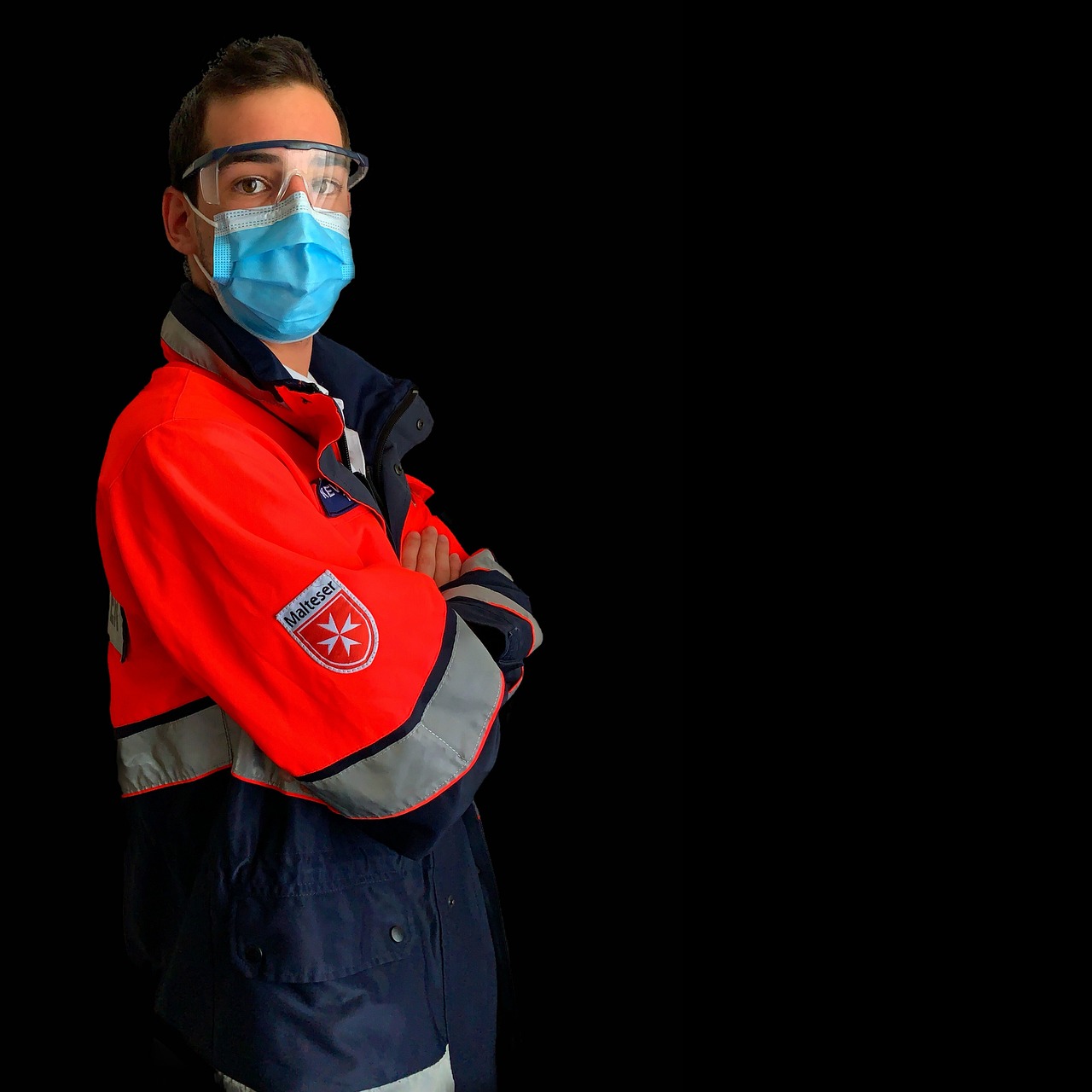
The Importance of Emergency Preparedness
Emergency preparedness is not just a buzzword; it's a vital practice that can mean the difference between chaos and order during a crisis. Imagine waking up one morning to find your community facing a natural disaster, like a hurricane or an earthquake. What would you do? Would you feel ready to take action, or would you be left scrambling for information and resources? Understanding the importance of emergency preparedness can significantly reduce risks and enhance the overall safety and well-being of all residents.
Preparedness is about more than just having a plan; it's about fostering a mindset within the community that prioritizes safety and resilience. When communities engage in preparedness initiatives, they not only equip themselves with the tools necessary to respond effectively during emergencies, but they also create a network of support that can be invaluable in times of need. This proactive approach can lead to quicker response times and less panic when disaster strikes.
One of the primary benefits of emergency preparedness is the reduction of panic and confusion. When individuals know what to do and how to react, it creates a sense of calm that can permeate through the community. This is particularly important because, during emergencies, fear can lead to poor decision-making, which can exacerbate the situation. By being prepared, residents can focus on taking appropriate actions rather than succumbing to anxiety and uncertainty.
Furthermore, emergency preparedness can save lives. According to various studies, communities that engage in regular training and preparedness activities experience significantly lower casualty rates during disasters. For instance, communities that conduct regular drills and workshops can effectively teach residents how to respond to emergencies, such as fire evacuations or first aid procedures. This knowledge not only empowers individuals but also fosters a collective resilience that is crucial during times of crisis.
In addition to saving lives, preparedness can also minimize property damage. When communities have clear emergency plans, including evacuation routes and communication strategies, they can mitigate the impact of disasters. For example, having designated shelters and clear signage can help guide residents to safety quickly, reducing the likelihood of injuries and damage to property.
In summary, the importance of emergency preparedness cannot be overstated. It is a fundamental aspect of building safe communities. By investing time and resources into preparedness initiatives, communities can create a culture of readiness that benefits everyone. The next time you think about emergency preparedness, remember that it’s not just about having supplies; it's about creating a resilient community that stands together in the face of adversity.
- What is emergency preparedness? Emergency preparedness refers to the planning and training that communities undertake to prepare for potential disasters and emergencies.
- Why is it important? Being prepared can save lives, reduce panic, and minimize property damage during crises.
- How can I get involved in my community's preparedness efforts? You can participate in local training programs, workshops, and drills to enhance your community's resilience.

Community Engagement in Preparedness
Engaging community members in preparedness planning is not just a good idea; it's a vital part of building a resilient society. When residents actively participate in emergency preparedness, they create a culture of readiness that can significantly reduce panic and chaos during crises. Imagine a community where everyone knows what to do when disaster strikes—how empowering would that be? It fosters a sense of belonging and responsibility, making individuals feel like they are part of something bigger than themselves.
One of the most effective ways to encourage community engagement is through organized drills and workshops. These events allow residents to practice emergency protocols in a safe environment, which can alleviate fear and uncertainty. For instance, participating in a fire drill not only teaches individuals how to evacuate safely but also builds confidence in their ability to respond effectively during a real emergency. Community members can learn from one another, share experiences, and develop strong bonds that ultimately enhance collective resilience.
Additionally, information-sharing plays a crucial role in preparedness. When residents are informed about potential risks and the resources available to them, they are better equipped to take proactive measures. This can be achieved through community meetings, newsletters, and social media platforms. For example, a local Facebook group dedicated to emergency preparedness can serve as a hub for sharing tips, resources, and personal stories. The more informed a community is, the more likely they are to act decisively when faced with an emergency.
Moreover, engaging the younger generation in preparedness initiatives is essential. Schools can incorporate emergency preparedness into their curricula, teaching children about safety protocols while also involving parents in the process. This not only educates the youth but also creates a ripple effect, as children often share what they learn at home, thereby raising awareness among families. Engaging with schools can also lead to community-wide events, such as safety fairs, where families can participate in fun and educational activities centered around preparedness.
Lastly, it’s important to recognize that community engagement in preparedness is a continuous process. Regularly scheduled events, such as town hall meetings or community forums, can keep the conversation alive and encourage ongoing participation. These gatherings can serve as a platform for residents to voice their concerns, share ideas, and collaborate on initiatives that strengthen their community's emergency response capabilities. By fostering an environment of open communication and collaboration, communities can build a robust framework for preparedness that benefits everyone.
Q: Why is community engagement important in emergency preparedness?
A: Community engagement is crucial because it helps build a culture of readiness, fosters collaboration, and ensures that residents are informed and prepared to respond effectively during emergencies.
Q: How can I get involved in my community's emergency preparedness efforts?
A: You can get involved by attending community meetings, participating in drills and workshops, volunteering for local organizations, or joining social media groups focused on preparedness.
Q: What role do schools play in community preparedness?
A: Schools can educate students about safety protocols and involve families in preparedness activities, thereby raising awareness and building a more informed community.
Q: How can communities maintain engagement in preparedness initiatives?
A: By regularly organizing events, encouraging open communication, and recognizing community members' contributions, communities can keep preparedness efforts active and ongoing.
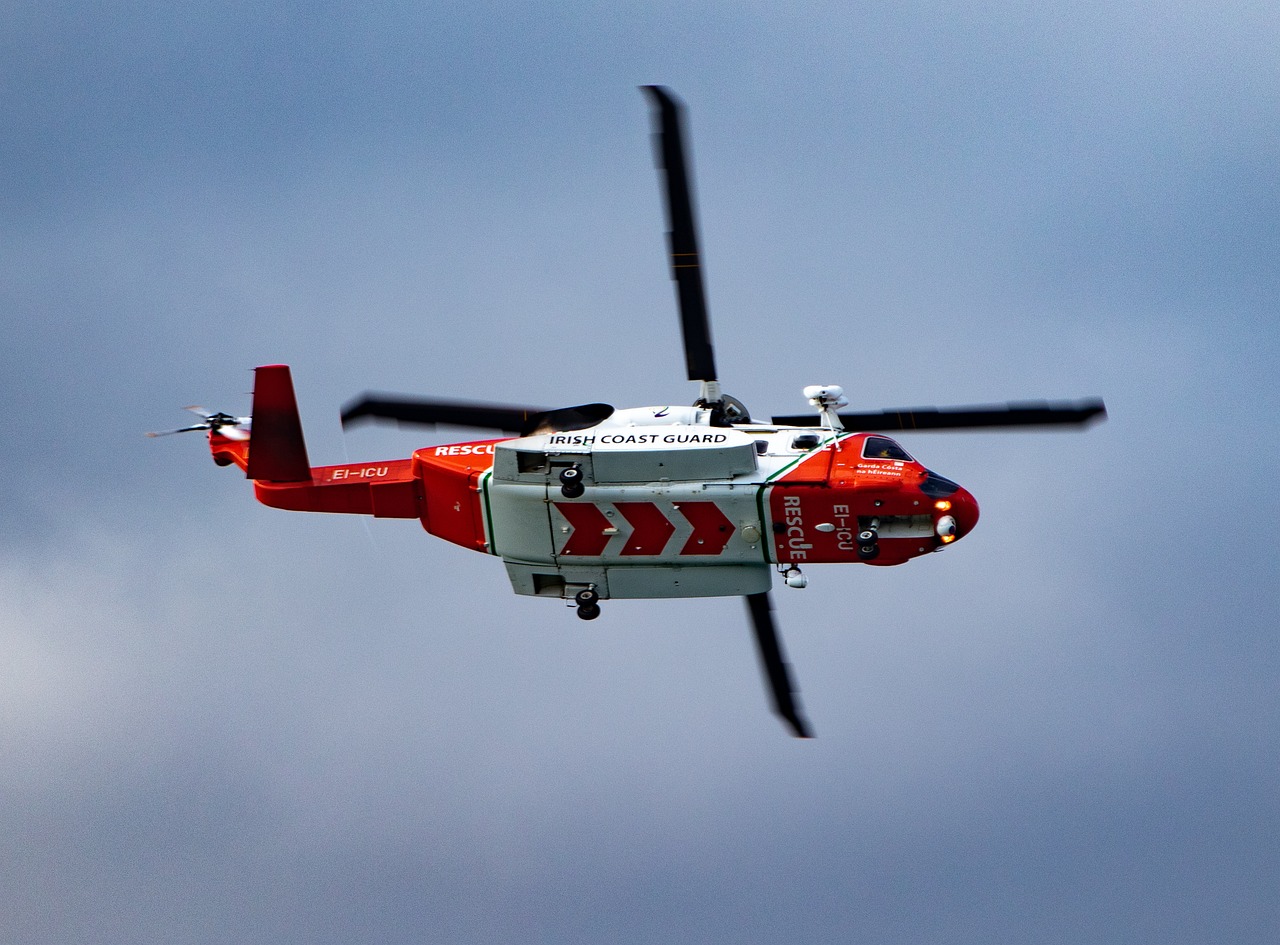
Training and Education Initiatives
Training and education initiatives are the backbone of any effective emergency preparedness strategy. They not only equip community members with essential skills but also instill a sense of confidence and readiness that can be crucial during a crisis. Imagine a community where every individual feels empowered to act decisively in the face of an emergency—that’s the kind of environment we aim to create through structured training programs.
One of the most effective ways to implement these initiatives is through a combination of workshops, hands-on training, and community drills. Workshops can cover a myriad of topics, including first aid, fire safety, and evacuation procedures. By participating in these interactive sessions, residents can learn not just the theory behind emergency response but also practical skills that they can apply when it matters most. For instance, a workshop on CPR can transform a bystander into a lifesaver in a critical moment.
Moreover, drills simulate real-life scenarios, allowing participants to practice their responses in a controlled environment. This practice is invaluable; it helps to demystify the chaos that often accompanies emergencies. When community members know what to expect and how to react, they are less likely to panic and more likely to assist others. In essence, these initiatives foster a culture of preparedness where individuals feel both responsible and capable.
To further enhance these training programs, it's essential to consider the diverse needs of the community. Different demographics may require tailored approaches. For example, elderly residents might benefit from mobility-focused drills, while youth programs can incorporate engaging activities that teach preparedness in a fun way. By recognizing these differences, training can be more inclusive and effective, reaching a broader audience.
In addition to workshops and drills, distributing educational materials can reinforce learning. Brochures, pamphlets, and online resources serve as handy references that residents can consult at their convenience. These materials can cover key information such as emergency contacts, evacuation routes, and safety tips. Furthermore, creating a centralized online platform for sharing resources can facilitate ongoing education and engagement.
Ultimately, the goal of training and education initiatives is not just to inform but to empower. When community members are well-trained, they become active participants in their safety and the safety of others. This collective readiness transforms neighborhoods into resilient communities, capable of facing emergencies head-on. As we invest in these initiatives, we are not just preparing for the worst; we are building a stronger, more connected society.
Q: What types of training programs are available for community members?
A: Training programs can include first aid courses, CPR training, fire safety workshops, and emergency response drills tailored to specific community needs.
Q: How often should training sessions be held?
A: It’s recommended to hold training sessions regularly, such as quarterly or bi-annually, to keep skills fresh and ensure community members remain engaged.
Q: Who can lead these training initiatives?
A: Local emergency services, certified trainers, and community volunteers with expertise in emergency management can lead these training initiatives.
Q: How can I get involved in community training programs?
A: Residents can reach out to local emergency management agencies, community centers, or neighborhood associations to find out about upcoming training sessions and how to participate.
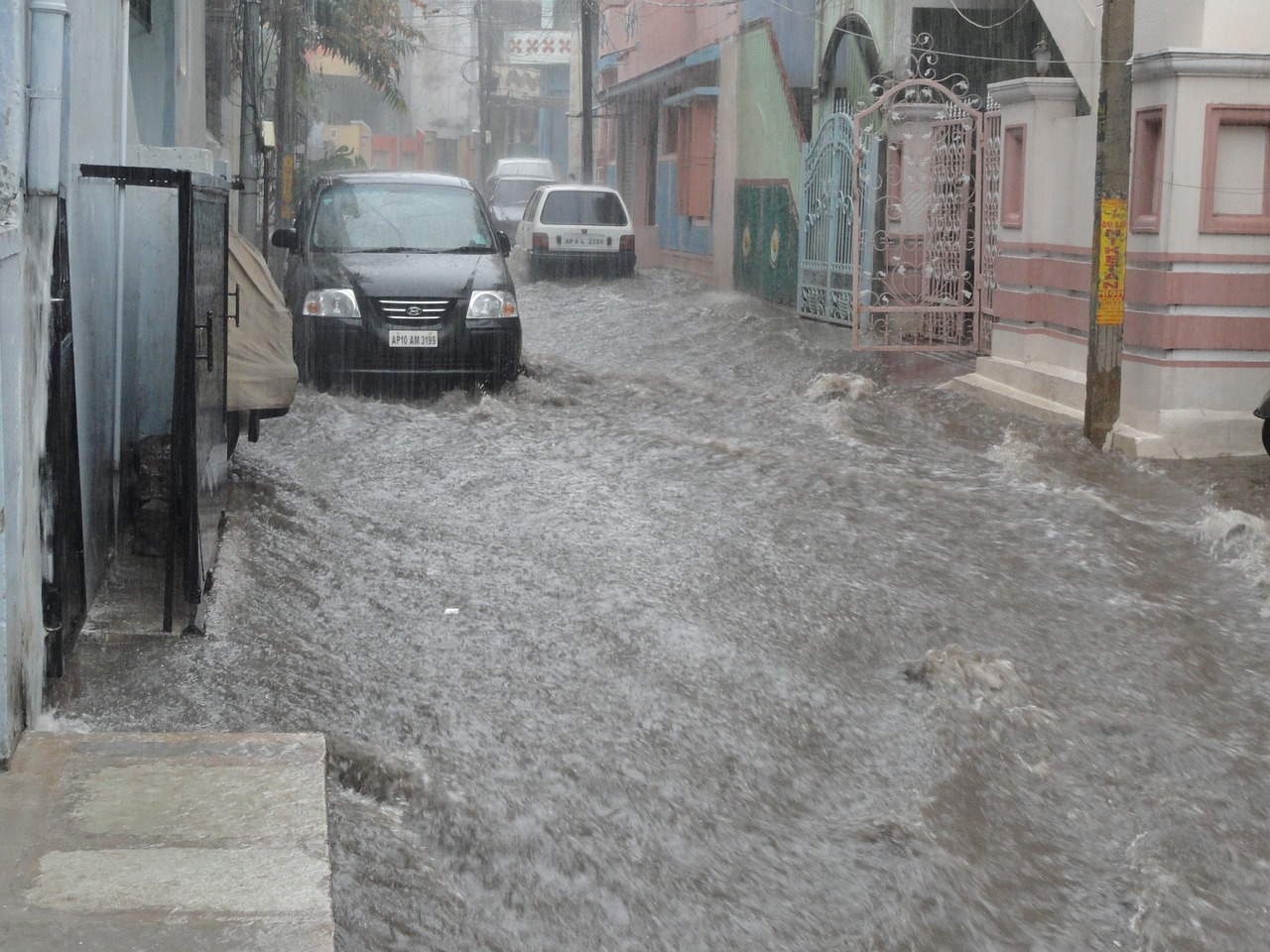
Workshops and Drills
When it comes to emergency preparedness, are like the practice rounds before the big game. They provide community members with the opportunity to engage in hands-on learning experiences, which are crucial for building confidence and competence in emergency response. Imagine standing in a room filled with your neighbors, all eager to learn how to react when the unexpected strikes. It’s not just about knowing what to do; it’s about feeling ready to spring into action.
These workshops often cover a variety of topics, from basic first aid to fire safety and evacuation procedures. Each session is designed to equip participants with essential skills that could potentially save lives. For instance, a workshop might include:
- CPR and first aid training, helping individuals learn how to respond to medical emergencies.
- Fire extinguisher demonstrations, teaching the proper use and techniques to combat small fires.
- Evacuation drills that simulate real-life scenarios, allowing participants to practice safe exit routes.
But it doesn't stop at just learning; the real magic happens during drills. These are the moments when theory meets practice. Drills simulate emergency situations, allowing community members to put their training to the test in a controlled environment. Picture this: the alarm sounds, and everyone knows exactly what to do. They move swiftly and confidently, guided by the training they received in workshops. This kind of preparedness can make all the difference when the stakes are high.
Regularly scheduled drills not only reinforce the skills learned in workshops but also help identify areas that may need improvement. After each drill, feedback sessions can provide valuable insights into what went well and what could be enhanced. This continuous cycle of learning and adaptation is vital for effective emergency preparedness.
Moreover, these activities foster a sense of community. When neighbors come together to learn and practice, they build bonds that extend beyond the classroom or drill site. It creates a network of support where everyone looks out for one another. In times of crisis, knowing that your neighbors are trained and ready can provide a sense of security that is invaluable.
In conclusion, workshops and drills are essential components of emergency preparedness. They transform ordinary citizens into capable responders, ready to tackle any challenge that comes their way. By participating in these activities, community members not only enhance their own safety but also contribute to a culture of resilience that benefits everyone.
Q1: How often should workshops and drills be conducted?
A1: It's recommended to hold workshops and drills at least twice a year to ensure skills remain fresh and relevant.
Q2: Who can lead these workshops?
A2: Workshops can be led by trained professionals, local emergency services, or community volunteers with expertise in emergency preparedness.
Q3: Are these workshops free to attend?
A3: Many community workshops are offered for free or at a minimal cost, thanks to local government initiatives or non-profit organizations.
Q4: How can I get involved in organizing these events?
A4: Reach out to your local community center or emergency management office to express your interest in organizing or participating in workshops and drills.
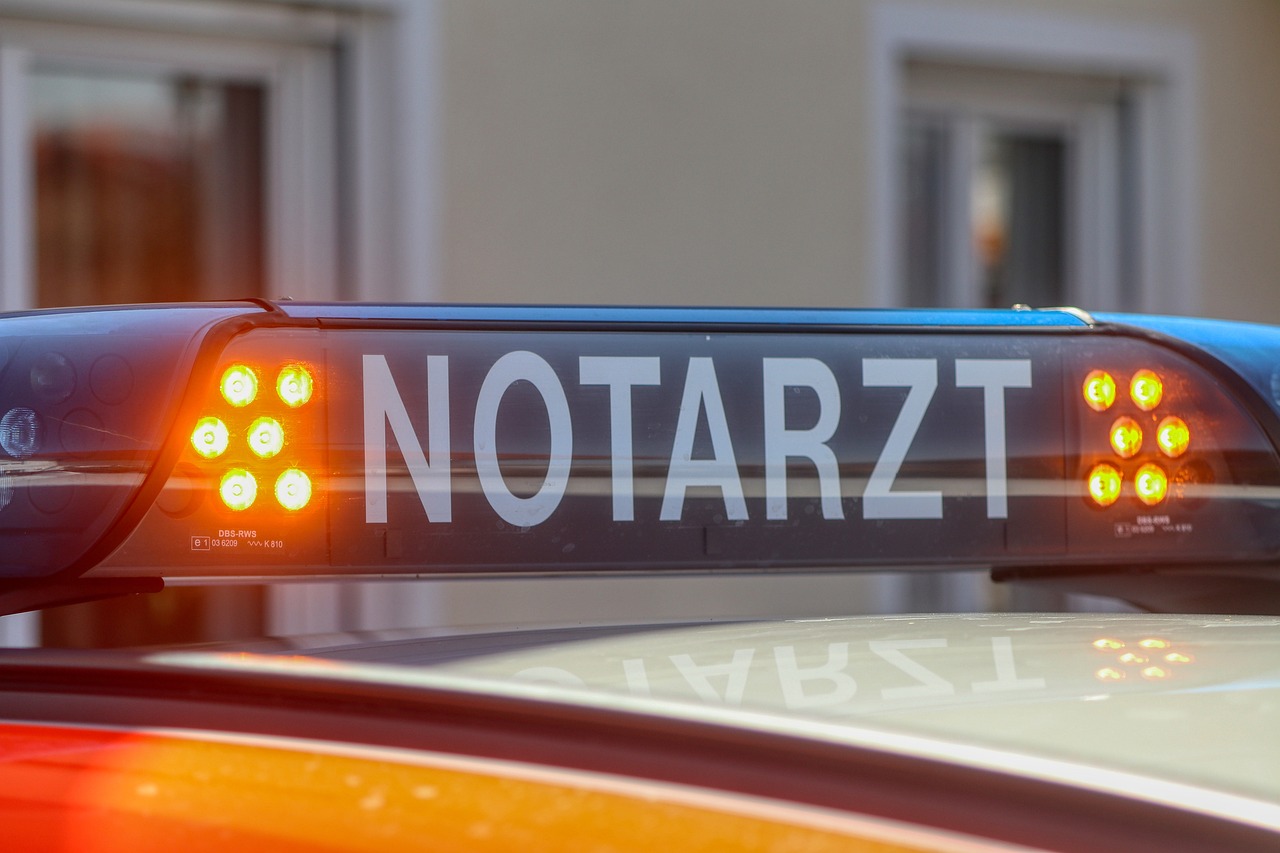
Resource Distribution
When we think about emergency preparedness, one of the most vital components is . Imagine a community facing a natural disaster, such as a hurricane or earthquake. The chaos can be overwhelming, and without proper resources, the chances of recovery diminish significantly. Therefore, ensuring that residents have access to essential emergency supplies is crucial for fostering resilience. This means not only distributing emergency kits but also providing educational materials that empower individuals to act swiftly and effectively during crises.
Emergency kits can include a variety of items, tailored to meet the specific needs of the community. For instance, a kit could contain:
- Non-perishable food items
- Water (at least one gallon per person per day)
- First aid supplies
- Flashlights and batteries
- Emergency blankets
But it’s not just about handing out supplies; it’s about creating a culture of preparedness. By distributing resources, communities can encourage residents to take personal responsibility for their safety and well-being. This can foster a sense of unity and shared purpose. For example, when neighbors come together to assemble their emergency kits, they’re not just preparing for a potential disaster; they’re building relationships that can be invaluable in times of need.
Moreover, it’s essential to ensure that these resources reach everyone, particularly vulnerable populations who may require additional assistance. This is where local authorities and community organizations can play a pivotal role. By collaborating with these entities, communities can establish distribution points that are accessible to all residents. Whether it’s a community center or a local school, having designated locations for resource distribution can make a world of difference.
In addition to physical resources, distributing informational materials is equally important. These materials can include guidelines on how to prepare for different types of emergencies, contact information for local services, and tips on creating personal emergency plans. When residents are informed, they’re more likely to take proactive steps in their preparedness journey.
In conclusion, effective resource distribution is a cornerstone of emergency preparedness. It not only equips individuals with the tools they need but also fosters a spirit of community resilience. By ensuring that everyone has access to essential supplies and information, communities can significantly enhance their ability to respond to emergencies and recover more swiftly.
- What should be included in an emergency kit?
An emergency kit should include non-perishable food, water, first aid supplies, flashlights, batteries, and emergency blankets, among other essential items.
- How can I get involved in my community's emergency preparedness efforts?
You can participate in local workshops, volunteer for distribution events, or join community planning committees focused on emergency preparedness.
- What resources are available for vulnerable populations during emergencies?
Local authorities and community organizations often provide additional support and resources, such as transportation services and specialized emergency kits tailored to the needs of vulnerable residents.
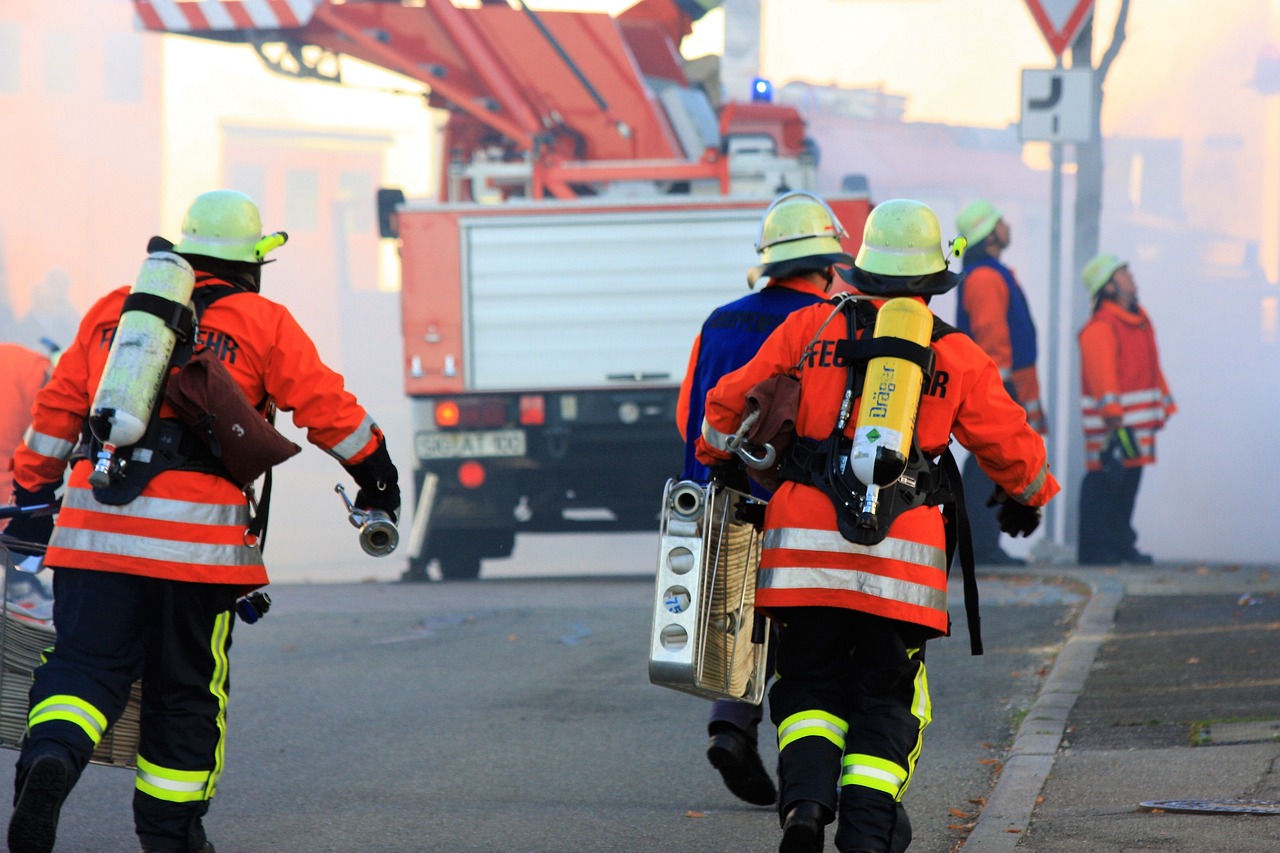
Collaboration with Local Authorities
The relationship between communities and local authorities is like a well-tuned orchestra; each player has a unique role, but together they create a harmonious response to emergencies. When communities collaborate with local authorities, they not only enhance their preparedness efforts but also establish a robust framework for effective crisis management. This collaboration can take many forms, from joint training exercises to resource sharing, and it is vital for building trust and ensuring that everyone is on the same page during a crisis.
One of the primary benefits of this collaboration is the access to vital resources that local authorities can provide. Imagine a community facing a natural disaster without the support of emergency services; it would be like trying to sail a ship without a compass. Local authorities bring expertise, equipment, and personnel that can significantly improve the community's ability to respond to emergencies. For instance, during a fire outbreak, local fire departments can offer training on fire safety, while police departments can assist in crowd control and evacuation procedures.
Furthermore, effective communication between community members and local authorities is essential. Regular meetings, open forums, and community outreach programs can bridge the gap between these two entities. This engagement fosters a sense of shared responsibility and empowers residents to voice their concerns and suggestions. When community members feel heard, they are more likely to participate actively in preparedness initiatives, creating a cycle of engagement that benefits everyone involved.
To illustrate this collaboration, consider the following table, which outlines key roles and resources shared between communities and local authorities:
| Entity | Roles | Resources Provided |
|---|---|---|
| Local Authorities | Emergency response coordination, training, resource allocation | Emergency personnel, equipment, funding |
| Community Groups | Awareness campaigns, volunteer coordination, local knowledge | Manpower, local insights, community networks |
In conclusion, collaboration with local authorities is not just beneficial; it is essential for building safe communities. By working together, communities can enhance their resilience and ensure a more effective response to emergencies. This partnership not only strengthens the community's ability to handle crises but also fosters a culture of preparedness that can save lives and minimize damage. So, let’s take that first step towards a safer future—engage with your local authorities and be part of the solution!
- What is the role of local authorities in emergency preparedness?
Local authorities coordinate emergency response efforts, provide resources, and offer training to community members to ensure effective crisis management. - How can communities engage with local authorities?
Communities can engage through regular meetings, open forums, and participation in joint training exercises and emergency drills. - Why is collaboration important?
Collaboration enhances resource access, improves communication, and fosters a shared sense of responsibility, ultimately leading to a more resilient community.
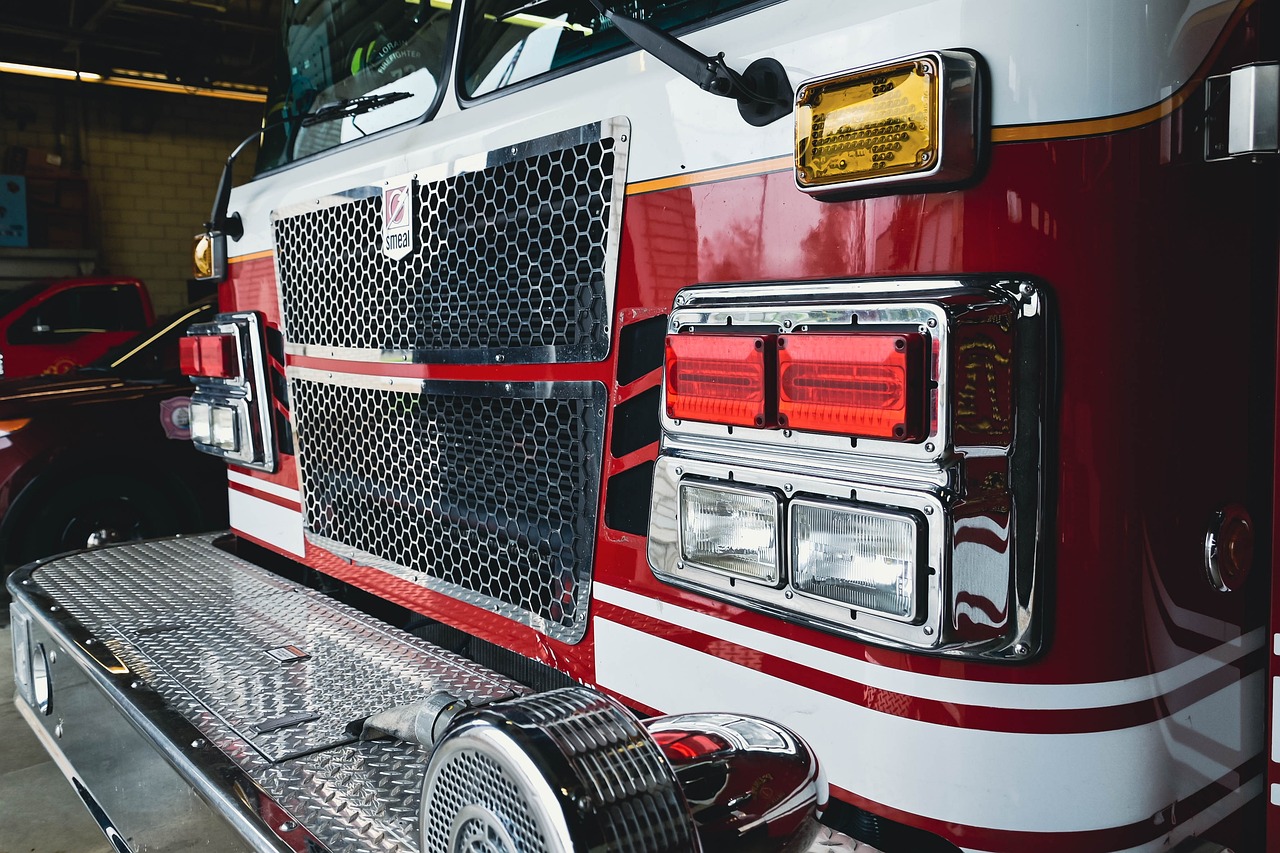
Creating Emergency Response Plans
Developing comprehensive emergency response plans is absolutely crucial for effective crisis management. Imagine being in the midst of a storm or a natural disaster; having a well-thought-out plan can mean the difference between chaos and order. These plans outline roles, responsibilities, and procedures that ensure swift and organized action during emergencies. They act like a roadmap, guiding communities through the fog of uncertainty that crises bring.
To create effective emergency response plans, communities first need to identify potential risks and vulnerabilities. This means taking a close look at what threats are most likely to affect the area. Are you in a flood zone? Is your community prone to wildfires? By assessing these factors, you can tailor your response plan to address specific threats. For instance, a community located near a river may prioritize flood response strategies, while another in a wildfire-prone area might focus on evacuation routes and shelter locations.
Once risks are identified, it's essential to involve community members in the planning process. This not only helps in gathering diverse perspectives but also fosters a sense of ownership among residents. When people feel they have a stake in the plan, they are more likely to engage with it and participate in drills and training sessions. Moreover, including local authorities and emergency services in the planning stages enhances the plan's effectiveness, as these entities can provide valuable insights and resources.
Another vital aspect of creating these plans is the importance of regular updates. Just like technology and society evolve, so do the risks and needs of a community. Regularly reviewing and updating emergency response plans ensures they remain relevant and effective. This could involve incorporating lessons learned from past incidents or adapting to new threats, such as climate change or shifts in population demographics. A plan that is stagnant is a plan that is likely to fail when it is needed most.
To illustrate the importance of these elements, consider the following table that highlights key components of an effective emergency response plan:
| Component | Description |
|---|---|
| Risk Assessment | Identify and evaluate potential risks specific to the community. |
| Roles and Responsibilities | Define who is responsible for what during an emergency. |
| Communication Plan | Outline how information will be shared among community members and authorities. |
| Training and Drills | Establish regular training sessions and drills to prepare residents. |
| Resource Allocation | Identify and distribute necessary resources for effective response. |
Ultimately, the goal of creating emergency response plans is to ensure that every community member knows what to do when disaster strikes. This not only improves individual safety but also enhances the overall resilience of the community. When everyone is on the same page, the community can respond more effectively, minimizing panic and confusion.
As you embark on creating or updating your community's emergency response plan, remember that collaboration is key. Engaging local authorities, residents, and emergency services creates a robust framework for managing crises. So, gather your community, share your ideas, and start building a plan that will keep everyone safe when it matters most.
- What is the first step in creating an emergency response plan? The first step is to conduct a risk assessment to identify potential threats specific to your community.
- How often should emergency response plans be updated? It's recommended to review and update your plans at least annually or after any significant incident.
- Who should be involved in the planning process? Involve community members, local authorities, and emergency services to ensure a comprehensive approach.
- What resources are necessary for effective emergency response? Resources may include emergency kits, communication tools, and information materials for residents.

Identifying Risks and Vulnerabilities
When it comes to emergency preparedness, the first step in safeguarding our communities is . This process is akin to a doctor diagnosing a patient; without understanding the underlying issues, any treatment may fall short. Communities face a myriad of potential threats, ranging from natural disasters like hurricanes and floods to human-made crises such as industrial accidents or terrorist attacks. By pinpointing these risks, we can tailor our emergency response plans to address the specific challenges we may encounter.
One effective method for identifying risks is conducting a comprehensive risk assessment. This involves gathering data on historical events, current environmental conditions, and the unique characteristics of the community. For instance, a coastal town might prioritize hurricane preparedness, while a community near a chemical plant might focus on hazardous material spills. Engaging local experts, residents, and stakeholders in this assessment ensures a well-rounded understanding of potential vulnerabilities.
Moreover, it's essential to consider social vulnerabilities within the community. Factors such as socioeconomic status, age, and disability can significantly impact how individuals respond to emergencies. For example, elderly residents may require additional assistance during evacuations, while low-income families might struggle to access necessary resources. By recognizing these social dynamics, we can implement targeted strategies to support those most at risk.
To further illustrate this point, let’s take a look at a simple table that outlines various risks and their corresponding vulnerabilities:
| Risk Type | Potential Vulnerabilities |
|---|---|
| Natural Disasters | Flooding, lack of evacuation routes, inadequate housing |
| Industrial Accidents | Proximity to hazardous materials, insufficient safety protocols |
| Public Health Emergencies | Access to healthcare, misinformation, lack of community support |
By compiling this information, communities can develop a clearer picture of their vulnerabilities and prioritize their preparedness efforts. Regularly revisiting these assessments is crucial, as risks can evolve over time due to factors like climate change, urban development, or shifts in population demographics. Keeping our finger on the pulse of these changes allows us to adapt our strategies and ensure that we remain resilient in the face of adversity.
In conclusion, identifying risks and vulnerabilities is a foundational step in building a safe and prepared community. By understanding the unique challenges we face and recognizing the needs of our residents, we can create effective emergency response plans that not only protect lives but also foster a sense of security and trust among community members.
- What is the first step in emergency preparedness? The first step is identifying risks and vulnerabilities within the community.
- How can communities assess their risks? Communities can conduct risk assessments by gathering data on historical events, environmental conditions, and social factors.
- Why is it important to consider social vulnerabilities? Social vulnerabilities affect how individuals respond to emergencies, and addressing them ensures that all community members are supported during crises.
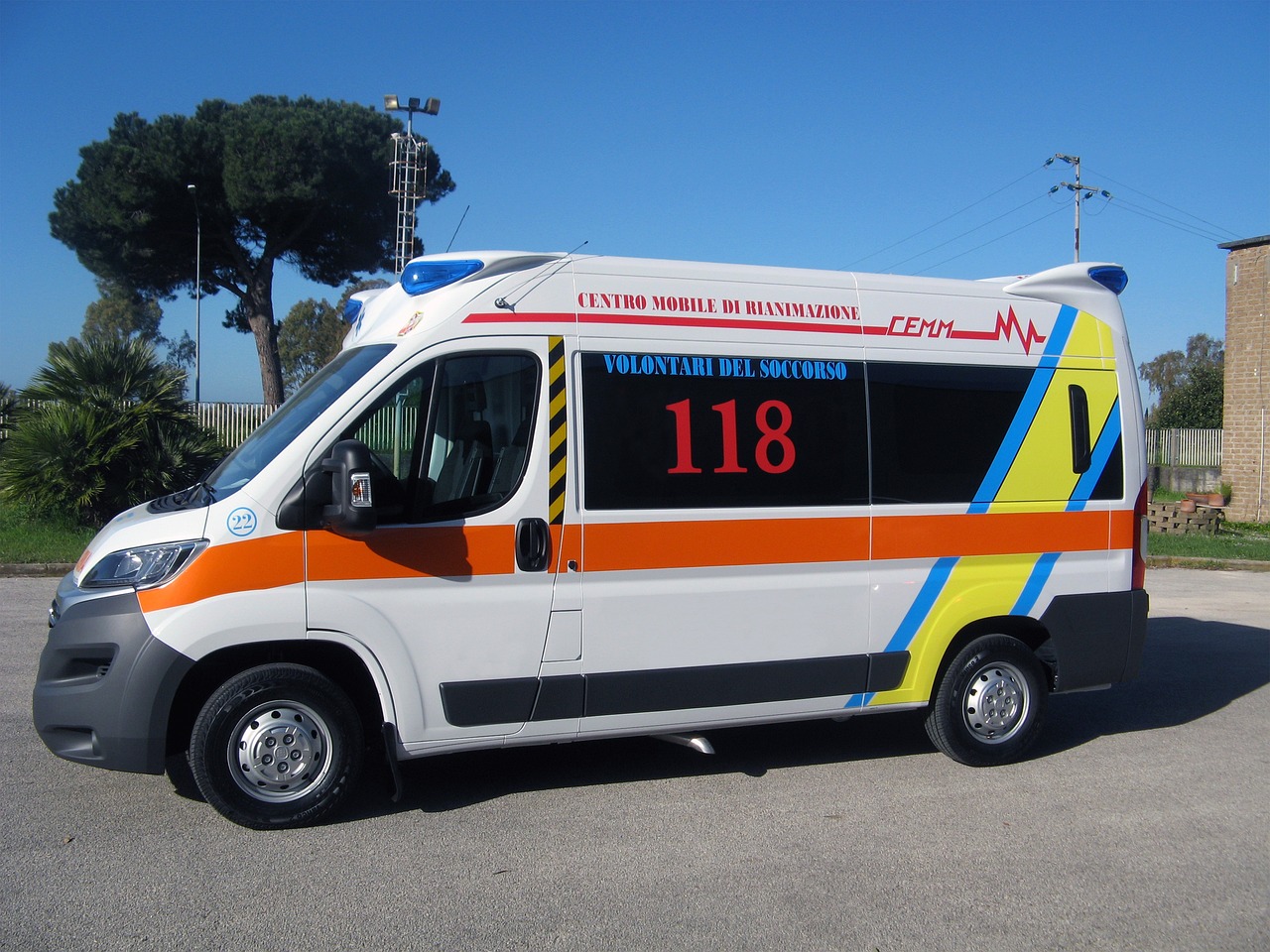
Regular Plan Updates
In the ever-evolving landscape of community safety, regular updates to emergency response plans are not just beneficial; they are absolutely essential. Imagine trying to navigate a ship through a storm without adjusting your course based on changing winds and tides. Similarly, communities must remain vigilant and adaptable in the face of new challenges and emerging threats. By frequently reviewing and updating these plans, communities can ensure that they are not only prepared for the most likely scenarios but also for unexpected events that could arise.
One of the key aspects of maintaining an effective emergency response plan is the incorporation of lessons learned from past incidents. When a crisis occurs, it often reveals gaps in preparedness that were previously overlooked. For instance, if a community experiences a natural disaster like a flood, the response might highlight the need for better evacuation routes or improved communication strategies. By documenting these insights and integrating them into future plans, communities can significantly enhance their readiness for similar events in the future.
Additionally, it's crucial to involve a diverse group of stakeholders in the updating process. This includes not just local authorities but also community members, businesses, and organizations. Each group can provide unique perspectives and insights that contribute to a more comprehensive understanding of the community's needs. Collaborative workshops or meetings can be organized to gather input and discuss potential changes. This not only enriches the plan but also fosters a sense of ownership among residents, making them more likely to engage with and support the plan.
Moreover, as communities grow and change, so do their risks. New developments, changes in population density, and even evolving climate patterns can introduce new vulnerabilities. Therefore, conducting regular risk assessments is vital. These assessments should evaluate both existing risks and potential new threats, ensuring that the emergency response plan remains relevant and effective. For example, if a community sees an increase in elderly residents, the plan may need to include specific provisions for their safety during emergencies.
To keep the emergency response plan dynamic and effective, communities should establish a review schedule. This could be annually, bi-annually, or as needed, depending on the community's specific circumstances. The schedule should outline who is responsible for conducting the reviews, what aspects of the plan will be evaluated, and how updates will be communicated to the community. A simple table can help visualize the review process:
| Review Frequency | Responsible Party | Evaluation Focus | Communication Method |
|---|---|---|---|
| Annually | Emergency Management Team | Overall effectiveness, new risks | Community meetings, newsletters |
| As Needed | Local Authorities | Specific incidents, feedback | Email alerts, social media |
Ultimately, the goal of regular plan updates is to create a culture of continuous improvement in emergency preparedness. By staying proactive and responsive, communities can ensure that they are not just surviving crises but thriving in the face of adversity. So, let’s make it a priority to keep our emergency response plans as dynamic as the communities they serve, ensuring that everyone is equipped and ready when it matters most.
- Why are regular updates to emergency response plans necessary?
Regular updates ensure that the plans remain relevant and effective in addressing current risks and community needs. - Who should be involved in the updating process?
A diverse group of stakeholders, including local authorities, community members, and organizations, should be involved to provide various perspectives. - How often should emergency response plans be reviewed?
Plans should be reviewed regularly, with a suggested schedule of annually or as needed based on the community's circumstances. - What is the role of lessons learned from past incidents?
Lessons learned help identify gaps in preparedness and inform necessary changes to improve future responses.

Building a Culture of Preparedness
Fostering a culture of preparedness within a community is not just about having the right tools or plans in place; it’s about instilling a mindset that prioritizes safety and readiness. Imagine a community where every resident feels empowered, informed, and ready to act in the face of emergencies. This transformation begins with proactive measures that encourage participation, awareness, and collaboration among all members.
One effective way to build this culture is through community engagement. When residents are actively involved in preparedness activities, they develop a sense of ownership and responsibility towards their community’s safety. This can take many forms, such as organizing training sessions, participating in drills, or even sharing information on social media platforms. The more involved people feel, the more likely they are to take preparedness seriously.
Moreover, incentives for participation can significantly boost engagement. Communities can offer rewards for those who complete training programs, participate in workshops, or volunteer for emergency response teams. These incentives can be anything from recognition in community newsletters to tangible benefits like discounts at local businesses. By making preparedness activities appealing, communities can motivate more residents to get involved.
Another key aspect is the celebration of successes. Recognizing and honoring individuals or groups who contribute to preparedness initiatives can strengthen community bonds. Whether it’s a simple acknowledgment at a community meeting or organizing an annual event to celebrate preparedness accomplishments, these gestures can motivate others to participate. Celebrating milestones not only reinforces the importance of being prepared but also creates a supportive environment where residents feel valued and encouraged to contribute.
To further enhance this culture, community leaders can implement awareness campaigns that highlight the importance of emergency preparedness. These campaigns can include informational sessions, distributing pamphlets, and utilizing local media to share stories of resilience and preparedness. By consistently communicating the message that preparedness is a shared responsibility, communities can create a robust support network that thrives on collaboration.
In essence, building a culture of preparedness is about creating a community where being ready for emergencies is second nature. It requires a collective effort, where every resident plays a part in ensuring safety. By engaging residents, providing incentives, celebrating achievements, and promoting awareness, communities can cultivate a resilient environment that stands strong against any crisis.
- What is the first step in building a culture of preparedness?
The first step is to engage the community through discussions and workshops to raise awareness about the importance of preparedness. - How can we encourage participation in preparedness activities?
Offering incentives such as recognition or rewards for participation can motivate residents to get involved. - Why is celebrating successes important?
Celebrating successes fosters a positive environment and encourages continued engagement in preparedness efforts. - What role do local authorities play in this culture?
Local authorities can support community initiatives by providing resources, training, and facilitating communication among residents.

Incentives for Participation
When it comes to building a safe community, one of the most effective strategies is to encourage participation in emergency preparedness activities. But how do we get people involved? The answer lies in offering incentives that resonate with community members. Think of it like a team sport; when players know there’s a reward for their efforts, they’re more likely to give it their all. Incentives can take many forms, and understanding what motivates individuals can lead to greater engagement and a more prepared community.
For instance, consider implementing a reward system for participation in training sessions and workshops. This could include gift cards to local businesses, discounts on community events, or even recognition in local newsletters. By providing tangible rewards, you not only encourage participation but also support local enterprises, creating a win-win situation. Additionally, community members who feel appreciated are more likely to spread the word, further enhancing participation rates.
Another effective incentive is the establishment of community competitions. Imagine a friendly challenge where neighborhoods compete to see who can create the most comprehensive emergency plan or gather the most supplies for an emergency kit. Not only does this foster a sense of camaraderie, but it also makes preparedness fun! To keep the momentum going, you could set up a leaderboard and celebrate the winners at a community gathering. This not only recognizes their efforts but also inspires others to join in the next time around.
Moreover, consider integrating educational workshops that offer certificates of completion. These certificates can be valuable additions to personal resumes or professional portfolios, providing an additional layer of motivation for individuals looking to enhance their skills. When people see that they can gain something of value while contributing to the safety of their community, they are more likely to participate.
In essence, the key to fostering participation in emergency preparedness lies in understanding what drives your community. Are they motivated by rewards, recognition, or the desire to contribute to a greater cause? By tailoring your incentives to meet these motivations, you can enhance engagement and build a culture of preparedness that benefits everyone. Remember, a community that prepares together, stays safe together!
- What types of incentives work best for community engagement?
Incentives such as gift cards, local business discounts, competitions, and certificates of completion have proven effective in motivating community members. - How can we measure the success of our incentive programs?
Tracking participation rates, collecting feedback from community members, and monitoring engagement levels during events can help assess the effectiveness of incentive programs. - Can incentives lead to long-term engagement?
Yes! When community members feel valued and appreciated, they are more likely to continue participating in future preparedness activities.
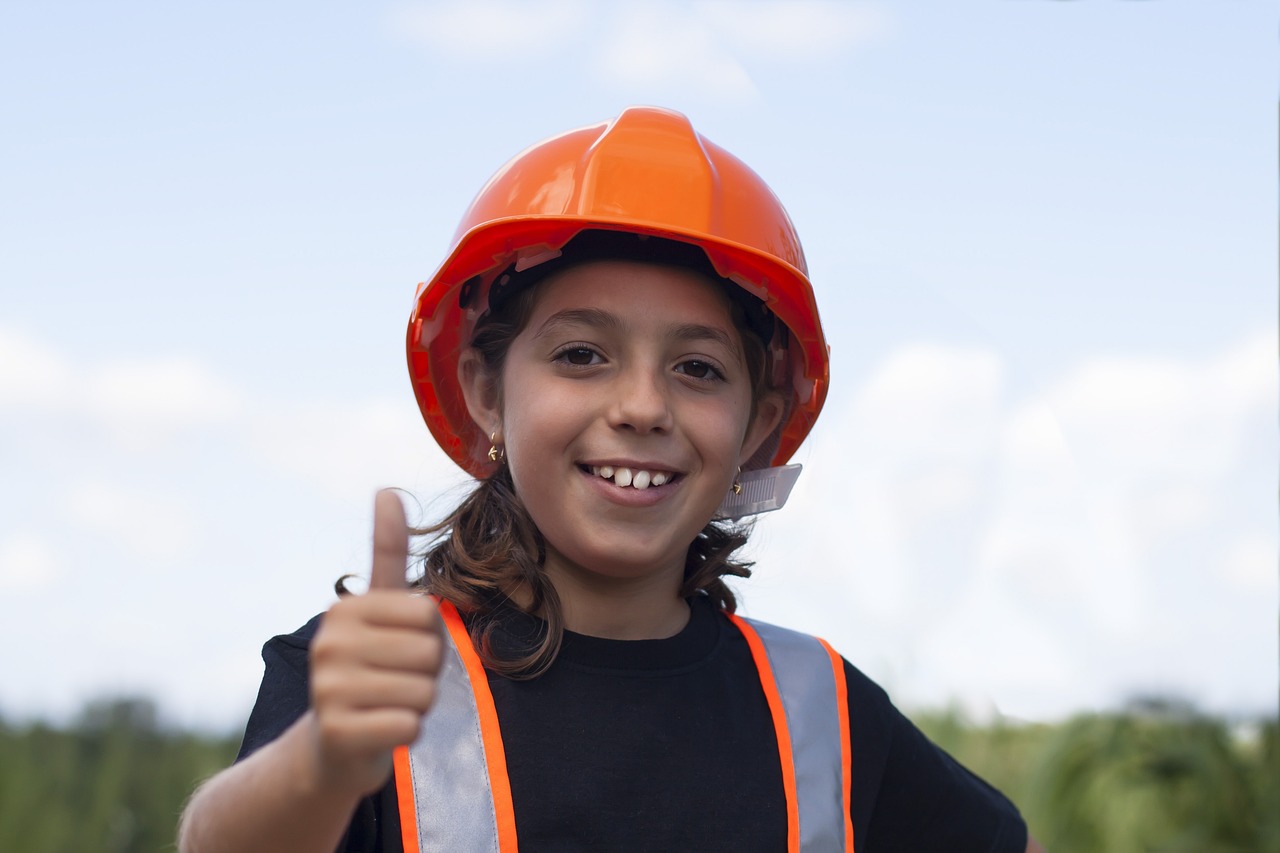
Celebrating Successes
When it comes to building safe communities, celebrating successes is not just a nice-to-have; it's a vital component of fostering a culture of preparedness. Recognizing the achievements of individuals and groups who contribute to emergency preparedness initiatives reinforces the importance of community involvement. Think of it like a sports team: when players score a goal, the celebration not only boosts morale but also strengthens team cohesion. Similarly, when communities celebrate their preparedness milestones, they create a sense of unity and shared purpose.
One effective way to celebrate these successes is through community events. These gatherings can serve as both recognition ceremonies and opportunities for education. Imagine a local festival where residents come together to share stories of how they prepared for emergencies, showcasing their emergency kits or demonstrating skills learned in workshops. Not only does this highlight the efforts of individuals, but it also encourages others to participate and learn, creating a ripple effect of preparedness throughout the community.
Additionally, local authorities and organizations can play a significant role in this celebration. By publicly acknowledging the hard work of community members through awards or certificates, they can inspire others to get involved. For instance, consider hosting an annual “Preparedness Awards Night,” where community leaders recognize outstanding contributions. Such events can include categories like “Best Emergency Kit” or “Most Innovative Preparedness Initiative,” encouraging friendly competition while emphasizing the importance of being ready for emergencies.
Moreover, sharing success stories through newsletters, social media, or local news outlets can amplify the impact of these celebrations. When residents see their neighbors recognized for their efforts, it sparks interest and motivates them to take part in future initiatives. A simple post highlighting a family that successfully organized a neighborhood drill can inspire others to follow suit. This storytelling aspect not only celebrates successes but also builds a narrative around community resilience.
Incorporating feedback from community members about their preparedness experiences can further enhance these celebrations. By creating platforms for residents to share their thoughts and suggestions, communities can continuously improve their preparedness strategies. This feedback loop fosters a sense of ownership and pride among residents, making them feel like active participants in the safety of their community.
In conclusion, celebrating successes in emergency preparedness is essential for building a resilient community. It not only acknowledges the hard work of individuals but also encourages ongoing participation and fosters a culture of readiness. Just as a well-timed cheer can uplift a sports team, recognizing achievements in preparedness can galvanize a community, making it stronger and more united in the face of potential crises.
- Why is celebrating successes important in emergency preparedness? Celebrating successes reinforces community involvement, boosts morale, and encourages others to participate in preparedness initiatives.
- How can communities celebrate their preparedness achievements? Communities can hold events, recognize individuals through awards, and share success stories via social media and newsletters.
- What role do local authorities play in celebrating preparedness? Local authorities can acknowledge community members' efforts through public recognition, fostering a sense of pride and motivation to engage further.
Frequently Asked Questions
- Why is emergency preparedness important for communities?
Emergency preparedness is vital because it equips communities with the knowledge and tools to respond effectively during crises. By being prepared, residents can minimize risks, protect lives, and reduce property damage, ensuring a quicker recovery after an emergency.
- How can community members get involved in preparedness planning?
Community members can engage in preparedness planning by participating in local drills, workshops, and informational sessions. Joining community groups focused on safety and sharing resources with neighbors can also strengthen collective readiness and resilience.
- What types of training initiatives can help residents prepare for emergencies?
Training initiatives can include first aid courses, emergency response drills, and workshops on disaster preparedness. These programs provide residents with essential skills and confidence to act swiftly and effectively in emergency situations.
- How often should emergency response plans be updated?
Emergency response plans should be reviewed and updated at least annually or after any significant incident. This ensures that the plans remain relevant and incorporate any new risks or changes in the community.
- What role do local authorities play in emergency preparedness?
Local authorities are crucial in emergency preparedness as they provide resources, support, and coordination during crises. Collaborating with them helps communities access vital information and assistance, fostering trust and effective communication.
- How can communities celebrate their preparedness successes?
Communities can celebrate preparedness successes by hosting events, recognizing individuals or groups who contribute significantly, and sharing stories of effective responses. Celebrating these achievements reinforces the importance of safety and encourages continued engagement.
- What incentives can be offered to encourage participation in preparedness activities?
Incentives can include discounts on emergency supplies, recognition programs, or community awards for active participants. These rewards motivate residents to engage more in preparedness initiatives, building a stronger, more resilient community.

